Secrets to Successful Wildlife Watching in Grand Teton and Yellowstone Part 1: Through the Seasons
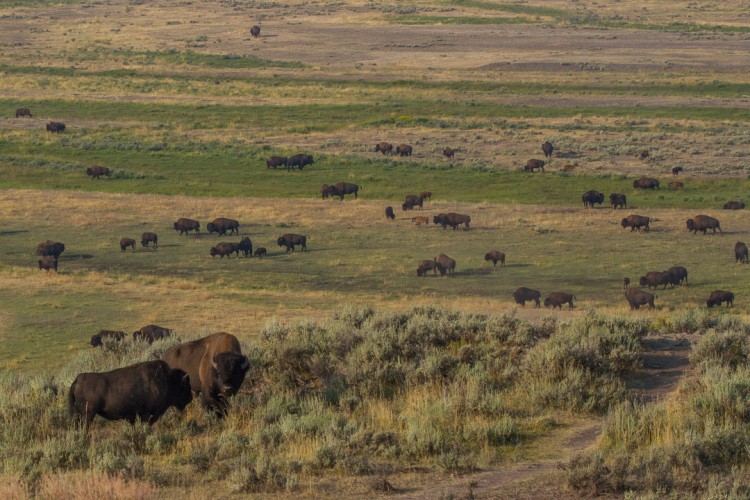

“The American Serengeti” - a landscape filled with herds of bellowing bison, sprinting pronghorn antelope, bighorn sheep standing atop cliffs, grizzlies and wolves hunting in wildflower filled meadows. Views like these were commonplace during the time of Lewis and Clark, but largely vanished due to market hunting throughout the 1980’s.
But not all was lost, and today thanks to over a century of dedicated conservation, the American Serengeti still has a home, Yellowstone. Today, the wild lands of the Greater Yellowstone Ecosystem host the greatest abundance and diversity of wildlife that has been found here in the last 130 years!
From the largest remaining herd of wild bison, to hundreds of bird species, massive elk, deer, and pronghorn migrations, wolves, grizzlies and mountain lions, Yellowstone and Grand Teton National Parks are a wildlife viewing hotspot. Want to make the most of a trip to see wildlife in the Greater Yellowstone Ecosystem? Read on.
Summer: June-August
As melting snow hydrates the landscape an explosion of plant and animal life emerges across the GYE. The ecosystems 1000+ plant species form the base of a diverse food web and as wildflowers peak in June and July so do sightings of baby animals. Elk, mule deer, bighorn sheep, mountain goats, pronghorn antelope, and moose all calve in late May or early June. This timing serves two major evolutionary advantages.
The arrival of so many animals literally swamps predators, such as black and grizzly bears, coyotes, golden eagles, and wolves. Within a few weeks, the calves are large enough to flee predators more successfully and overall predation is limited. Last year on a Teton wildlife tour, we observed a black bear locate a bedded pronghorn fawn and give chase, only to realize he was no match for the speedy fawn, who easily disappeared.
Perhaps the most important reason to calve in spring is our short summer season and harsh winters, which present an even more formidable challenge than predation, the possibility of starvation. The small stomachs of young animals limit their ability to consume critical forage before the coming winter, so they must take advantage of the entire summer to grow.
Angry August: The Bison Rut!
As summer marches on across the GYE the days grow hot and dry. Angry August is near. In Yellowstone’s Lamar and Hayden Valleys and the Jackson Hole Valley of Grand Teton National Park, bison, our largest animal found in the GYE congregate for an annual event, the rut or mating season. Though the bison rut often gets going in Late July, we generally observe peak behavior in August. As testosterone peaks, bull bison rejoin female herds, bellowing, scent marking and kicking up dust in wallows and fighting as they seek to establish a dominance hierarchy. The rut is fatal for some, providing scavenging opportunities for wolves, grizzlies and other scavengers.
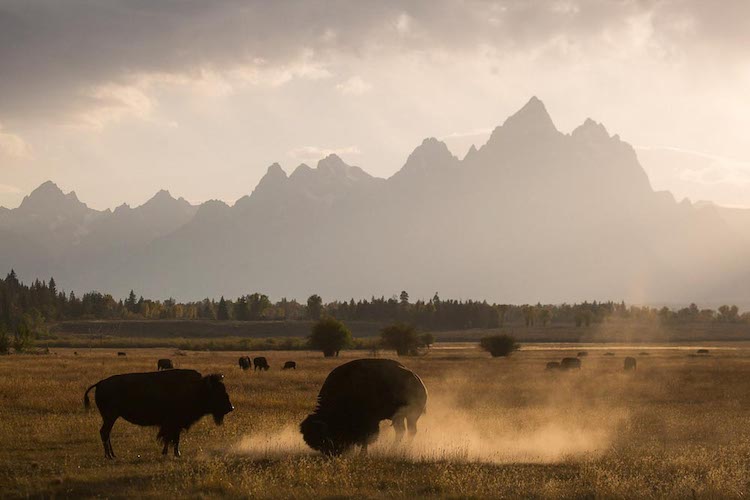
Dominant bulls “tend” to females who are near estrus (receptive to mating). Look for a “flehmen response” where bulls tilt their heads and curl their lips upward before freezing in place. This behavior allows bison and other animals to send scent to a specialized gland which can tell them if a female is receptive to mating.
Fall: September - November
The bison rut is the first of the upcoming mating seasons for ungulates in the GYE. As bison cool down, we start to observe their speedy neighbors, pronghorn antelope, heating up. Dominant buck pronghorn have an exhausting job, constantly chasing other males out of their territories while herding groups of females back in. This behavior may serve as an adaptation keeping the species fleet footed, pronghorn once needed to out run the now extinct North American Cheetah. All this running can mean male pronghorn lose up to 10% of their body weight right before winter!
Bugling Bulls Beneath the Tetons
For many, including myself, the peak event of the mating season starts with frosty mornings and golden aspen trees. A lone bugle emits through the still air and a champion emerges, it’s a bull elk. Growing up near Rocky Mountain National Park, my family and I took annual trips to watch these giants battle to control herds of cow elk. Today my EcoTour Adventures Guests and I watch them in open meadows beneath the awe inspiring Teton Mountain Range.
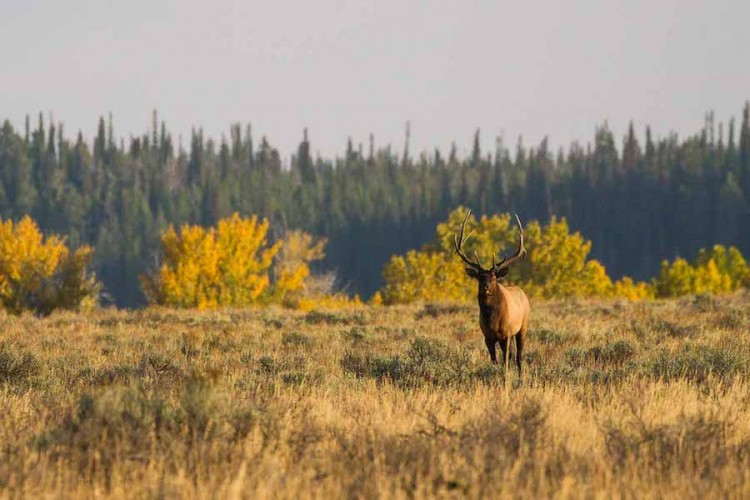
Photograph elk and other wildlife during our Fall Photography Workshop, we have just a few spots left!
Moose, our largest deer species are also courting during this time, choosing the golden forests of cottonwood trees in river bottoms to meet. Bull moose, weighing in at around 1000 lbs, begin to concentrate near females, both sexes generally remain solitary during most of the summer.
Bears!
Fall wildlife activity is already packed without the addition of some of the best bear activity of the year! Both Black and Grizzly Bears become highly active in the fall as high calorie content food sources like berries, whitebark pine cones, and carcasses from the bison rut become available. During this period, known as hyperphagia or “over eating” the bears consume upwards of 20,000 calories a day!
Both Grand Teton and Yellowstone National Parks become hotspots for bear viewing during this time. Don’t forget to “be bear aware” by 1. Keeping a 100 yard distance from bears, 2. Travel in groups and make noise, and 3. Carry Bear Spray and know how to use it!
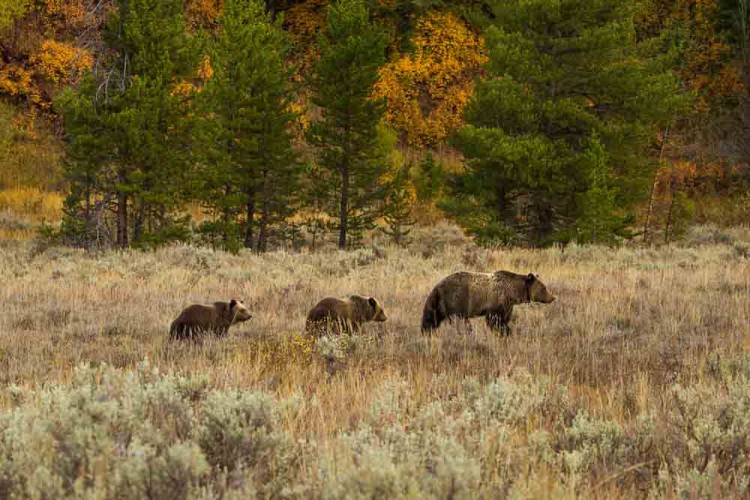
Fall Migrations
At any point in the fall the first snow may come, blanketing the Greater Yellowstone Ecosystem in white. It’s a signal for our great herds of wildlife to begin epic migrations out of the high country and back towards winter habitat. Wildlife biologists have mapped 10 major elk migrations out of Yellowstone as well as the longest known pronghorn (100 miles!) and mule deer (250 miles!) migrations in the world, and you can catch them in action right here.
Winter: December - March
As winter storms loom, the roads of Yellowstone and Grand Teton begin to close for the season. This year (2019) Dunraven Pass and the Beartooth Highway close October 15th, with the remainder of the park’s interior roads closing on November 4th. The Teton Park Road, one of our favorite spots to look for bugling elk in fall, closes on November 1st for the winter.
But don’t let the limited road access discourage you, for wildlife enthusiasts, winter is one of the best times to observe wildlife in the GYE. Here’s why.
Concentrated Wildlife
In winter, wildlife come to us in Jackson Hole. The 11,000 strong Jackson Hole herd, formerly dispersed across the National Forest and National Parks now concentrates in the valley, thousands of them wintering on the National Elk Refuge just outside of the town of Jackson. They’re joined by bighorn sheep and mule deer taking refuge from deep snow in the high country.
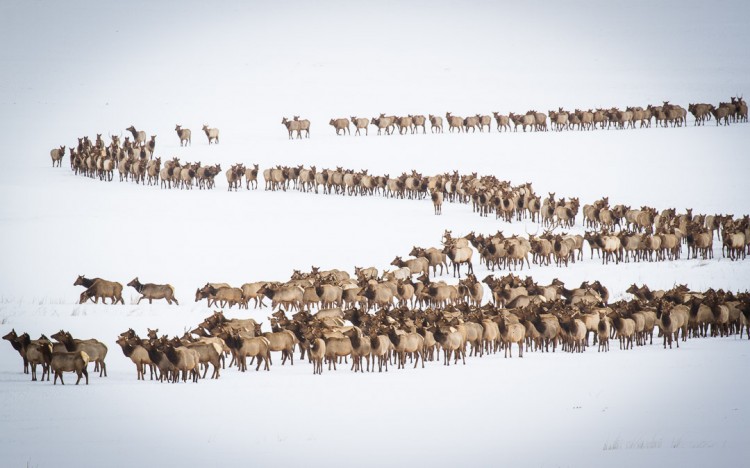
At no other time of year are wildlife as concentrated as in winter, including predators like wolves and the occasional mountain lion. Scavengers, including coyotes, golden and bald eagles are also more visible, I’ve observed more than 30 eagles from one viewpoint on the Refuge before.
Flat Creek, a spring fed creek which winds across the Refuge remains free from ice for much of the winter, attracting numerous species of ducks and hundreds of the once critically endangered Trumpeter Swan. Migratory rough-legged hawks are often seen perching along the Refuge, they’ve traveled over 2000 miles from above the arctic circle to get here!
To the north, in Grand Teton National Park, the snowy fields of Antelope Flats attract moose who concentrate in numbers not seen during other times of year. They are here to feed on antelope bitterbrush, a shrub with more easily digestible stems which helps get them through the winter.
Nordic Skiing and Snowshoeing
Winter is also a peaceful time to explore the silent winter wonderland of Grand Teton and Yellowstone National Parks on cross country skis or snowshoes. Winter is an ideal time to study the track and sign of winter wildlife, each snowstorm brings a blank canvas on which they write. The diverse and abundant wildlife found here means tracking a porcupine one minute, then finding mountain lion tracks, then a pile of fur and quills where the two met. Stories like these which unfold in the snow are one of our favorite parts of winter.
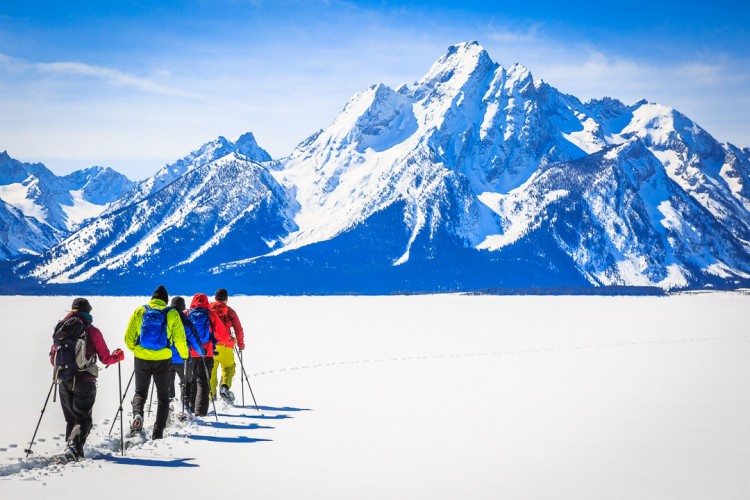
Wolf Watching
There is no better time to search for wolves than winter, and though Grand Teton can be a good option, the Northern Range of Yellowstone reigns supreme as a top location for wolf watching in the lower 48 states. Over 150,000 people visit Yellowstone annually with the specific intention of wolf viewing, generating over $35 million in economic activity for surrounding communities.
Wolves, like many other wildlife species were systematically eradicated from most of their historic range in the 1800’s and early 1900’s. Their return in 1995 is one of the greatest conservation success stories of the Greater Yellowstone Ecosystem. Though wolves can be viewed any time of year I recommend the wolf mating season in late January/February.
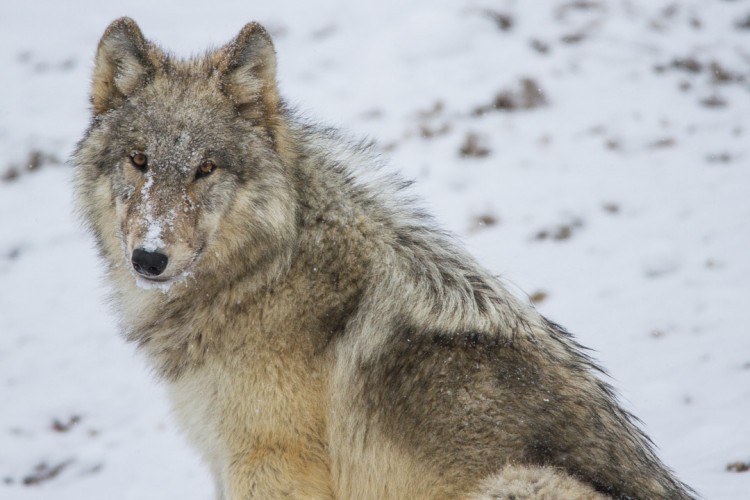
Sparse Crowds in Yellowstone’s Winter Wonderland
To enter Yellowstone’s snowy interior in winter, one must join a guided snowmobile or snow-coach trip. Visitors to this winter wonderland can enjoy the usually crowded thermal features with a select few, some of whom may be a bit more hairy and hooved. The interior bison herd migrates to thermal areas in winter to take advantage of shallow snow.
Spring: April-May
Even the toughest bison longs for coming spring, and so do I after 5 months of winter! Spring comes on slow in the Greater Yellowstone Ecosystem but the tiny green shoots which follow melting snow are a promise of the bounty of summer to come. Wintering elk and deer herds are now reaching the end of their fat reserves and set out to retrace the great migrations of fall in reverse. Experienced matriarchs lead their herds in surfing the green wave of spring towards the promise of summer.
Migrations on the Wing cross Continents, and Hemispheres!
As our big game herds begin their march towards summer so do the winged migrations across the Greater Yellowstone Ecosystem. With close to 300 documented species of birds, Yellowstone and Grand Teton are a birders paradise, especially in spring. Starting as early as March, look for the flash of brightly colored mountain bluebirds on the National Elk Refuge, or near Gardiner at Yellowstone’s north entrance. 6 species of swallows will soon follow, some competing for the same nesting habitat.
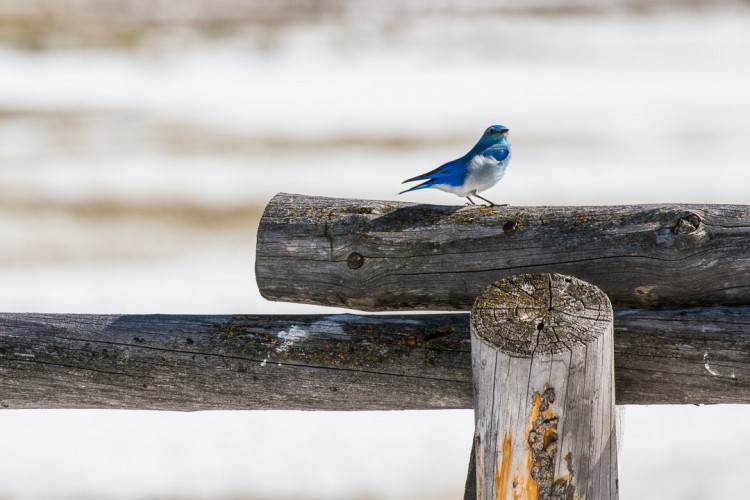
Broad tailed and calliope hummingbirds return here from Central America to feed on the nectar of blooming wildflowers. Visit grasslands to look for one of our longest avian migrants, the Swainson’s Hawk. Over the course of three months each spring and fall Swainson’s travel over 7000 miles, all the way to the Argentinean Pampas or grassland.
One of my favorite spring sightings generally occurs in early May at LeHardy Rapids on the Yellowstone River. Harlequin ducks, a species of torrent duck arrive here from the Pacific Northwest coast to feed and mate. Perfectly adapted to life in rough water, harlequins have extra strong bones. After a summer raising chicks in Yellowstone’s rugged interior the females will stop once again at the LeHardy Rapids before making the cross country journey back to the coast.
Baby Bison!
As our year of wildlife in Yellowstone completes its circle we return to the first baby mammals or spring, bison calves. Calves can be born in early April, up to two months before their elk or deer counterparts. I usually observe the first bison calves in Yellowstone’s Northern Range, with the Teton bison herd calving several weeks later.
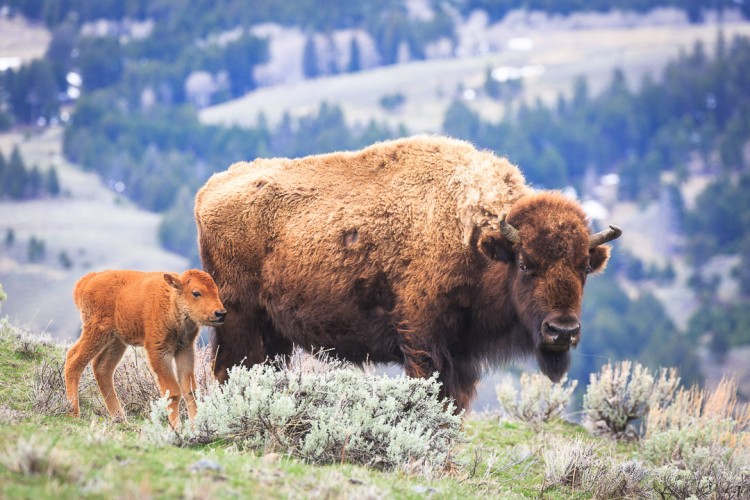
Up Next: Wildlife Watching Tools of the Trade, Safety and Ethics
No matter the season, wildlife watching in Yellowstone is a must do experience for wildlife enthusiasts. Now that we’ve covered what to expect through the seasons read part two of this blog to learn about the tools of the trade, safety and ethics of wildlife watching. Learn what the pros do to have the best possible experience observing wildlife in Grand Teton and Yellowstone National Parks here.
Please let us know if we can help with guiding your next adventure in Grand Teton or Yellowstone National Parks by calling us 307-690-9533 or emailing info@jhecotouradventures.com.
Now in our 11th year of operation, Jackson Hole Ecotour Adventures leads wildlife safaris, cross country skiing tours, and snowshoe tours in Grand Teton and Yellowstone National Parks 365 days a year. Let us help maximize your Jackson Hole Experience Today!













